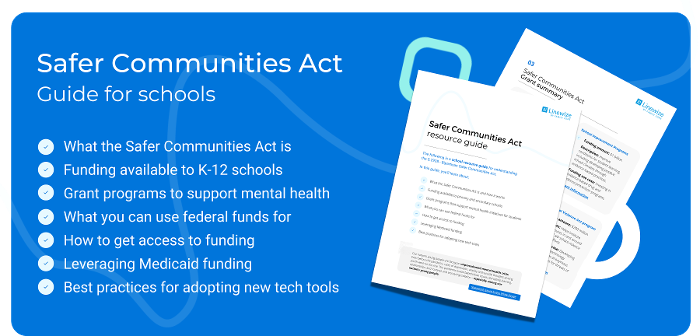Best Practices for IT Budgeting at School Districts

By: Linewize Team
Updated: 01 March, 2024
Budget season is rarely a walk in the park IT directors, CTOs, and CIOs in the K-12 industry. They're often tasked with implementing cost-effective, compliant tools and systems with limited finances and resources.
Yet, contrary to what many believe, creating an effective and useful IT budget for a school district doesn’t start with numbers. It starts with a clear vision and understanding of the school district’s values, goals, and needs.
Your school district doesn’t just need a budget that allocates funds. It needs a budget that aligns its spending with its values, satisfies administrators, teachers, and parents, and relies on data to make good funding decisions. This is all in order to support the best possible learning environment.
Here’s how to do that.
Align Spending With Values
Whether in politics, the home, or the school district, budgets express values. Put another way, money talks.
For example, if your school district claims to value student privacy, but hasn’t invested in an end-of-life plan to archive and delete student data when students graduate or leave school, it may not value privacy as much as it says it does.
IT can’t identify values and establish priorities on their own. Ask school district administrators:
- What are the educational priorities in the upcoming year?
- What values should guide our budgeting process?
- How should resourcing decisions be made? Based on the total value for students? For teachers? Based on particular goals for student achievement?
Engaging school administrators at this point, before dollar amounts are assigned to line items, will help ensure buy-in and support from administrators after spending decisions are made.
Give your team sufficient time for due diligence
As the old adage goes, time is money One the most common issues that IT face is the lack of sufficient time to dedicate to due diligence. At any given time, a school's tech stack consists of multiple different software; in many cases, these systems can't be integrated to talk to one another and require users to partake in complex training and onboarding courses.
In a study conducted by UKG, a workforce management system, 63% K-12 districts nationwide lost teachers to other school systems in the past year because "employees sought a more advanced technology experience."
So why do schools keep antiquated tech? Budget and limited funds are often the primary culprit, but another reason why schools don't migrate solutions is because they don't:
A) Have the time to research the best alternatives
B) Have the time to execute proof of concept programs and trials
C) Have the time to train other staff members on new tech
According to a ZenBusiness survey, outdated technology had a negative impact on productivity and had a negative impact on company morale, costing companies in the U.S $1.8 billion annually.
Dedicating much-needed hours towards detailed due diligence might feel like a big buy-in. However, giving yourself and/or your IT team the time properly vet edtech technology, classroom management software, and other tools in your tech stack will likely save you money in the long-term, yield a positive ROI, and improve company culture.
Explore grant opportunities
Unfortunately, many schools are plagued with constrained budgets. However, there are plenty of grant opportunities available to schools, many of which administrators may not be aware of. For example, the Safer Communities Act offers billions of dollars in grants to support mental initiatives in schools.
There are also a variety of private grants geared towards helping educators achieve their goals and keep their students safe. Reach out to your state or local education agency to see what grants might be available to support your needs.
Work Closely With Teachers
Talk to teachers to understand their needs. Maybe rather than having another tool introduced in the classroom, they’d like to receive more training on an existing tool they don’t feel entirely comfortable using. Or maybe they have a particular problem they don’t even know tech could solve, such as scheduling tools to schedule parent-teacher meetings.
There’s no substitute for talking to teachers, who also understand how students use technology and what student and parent needs are. Teachers can also be a wellspring of creative ideas for technology pilots and innovative uses of technology in your school district.
Take the time to listen to teachers and factor their needs into your budget.
Use Data to Allocate Funds and Set Goals
Your IT department collects an abundance of data. All that data is a wealth of information that can inform smart spending, and help you provide a rationale for your budget, too.
For instance, if many of the support tickets your IT department receives are for a particular piece of software, it is worth asking whether that software truly meets your district’s needs, or if you should budget for new software in the upcoming year.
When both data and values are considered, you have all the information you need to make tough budgetary decisions.
For example, perhaps your district is considering whether to implement a new integrated library system or upgrading its computer lab at one of its high schools. Taking into account data (information like how many students would benefit from the library system versus the computer lab, and how each choice would affect student achievement) and values (whether your district wants to make resourcing decisions based on total value to students, or on particular goals for student achievement) will make many funding decisions easier.
Other School IT Budgeting Tips
The Government Finance Officers Association provides excellent advice on how to set school district budgets that can guide the IT budgeting process.
As you prepare your IT budget, it’s important to also:
- Consider bandwidth needs. Especially if your school adds devices to the network, you will need to budget for bandwidth expansion.
- Factor in total costs, including the costs of maintenance and upgrades.
- Think about interoperability. As we’ve previously described, connected products save your district time and money. Avoid investing in products that don’t integrate with your existing EdTech products.
Establishing an IT budget can be daunting, but by consulting with administrators to establish values, talking to teachers to understand their needs, and relying on existing data to allocate funds and set goals, you’ll be on your way to creating a budget that serves your school district—and its students—well.
Let's connect
Talk to us
Talk to an expert or book a demo. Our cyber safety experts are waiting to help.
Stay in touch
Sign up for our newsletter to get all the latest product information.

